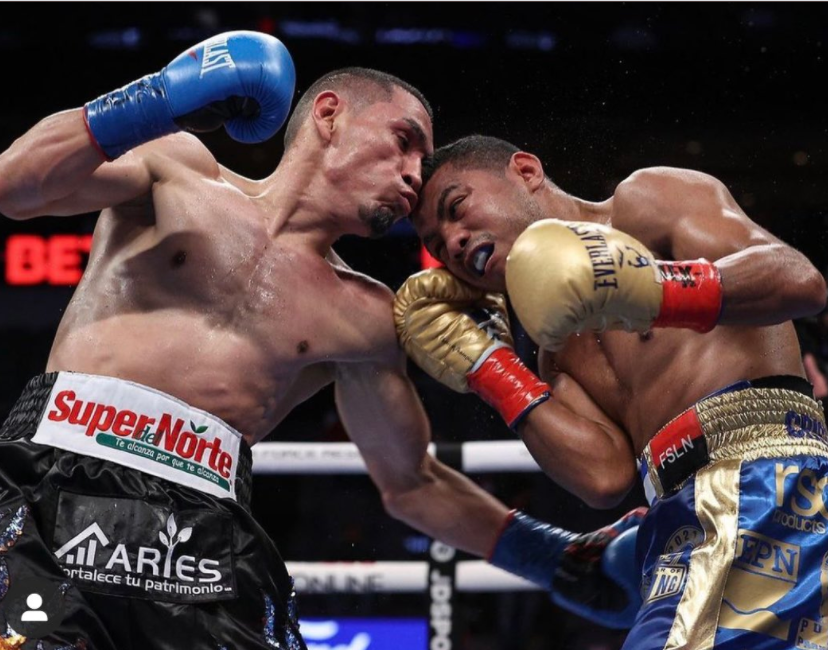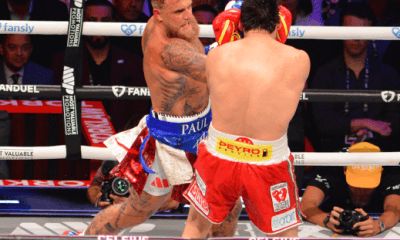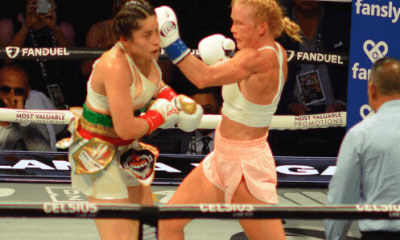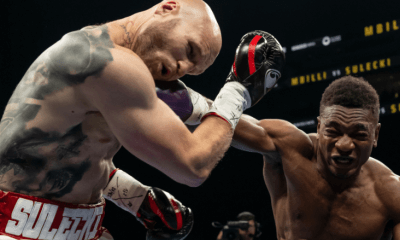Featured Articles
Boxing Odds and Ends: Poor Judging, an IBHOF Memorabilia Auction and More

Boxing Odds and Ends: Poor Judging, an IBHOF Memorabilia Auction and More
The Matchroom card at the Bank of America Center in Dallas this past Saturday was one of the best cards of the year. Four of the six fights were competitive, there were two mild upsets, and the headline attraction between Juan Francisco Estrada and Roman “Chocolatito” Gonzalez was a lollapalooza. However, the show was marred by some perplexing scorecards.
“There is always some clown judge who ruins what was otherwise a brilliant night for boxing,” tweeted ESPN boxing commentator Bernardo Osuna whose ire was directed at Carlos Sucre, the judge that awarded the victorious Estrada nine of the 12 rounds.
The chief undercard bout also produced some head-scratching scores, notwithstanding the fact that all three judges were in accord that Jessica McCaskill dominated Cecilia Braekhus. One of the judges had McCaskill pitching a shutout and the others gave her nine and eight rounds, respectively. There was little argument that McCaskill deserved the nod, but years from a now a fellow perusing BoxRec will be inclined to think that McCaskill triumphed in a near-cakewalk and that will diminish Braekhus’s legacy.
Because the show was held in Texas, many bloggers upset with the scoring held the Lone Star State boxing officials, in the abstract, to blame. Yes, it’s true that there have been queer goings-on in boxing in Texas over the years, but this time the locals got a bad rap. Judge Sucre is a Floridian – from Miami by way of Venezuela – and Chris Tellez, the judge who awarded Jessica McCaskill all 10 rounds, resides in New Mexico. (Another Florida judge, Gloria Martinez Rizzo, had it 9-1 for McCaskill.)
During the 1980s, the abstract Las Vegas judge was a whipping boy. It all started with the Holmes-Cooney fight of 1982. Two local judges, Duane Ford and Dave Moretti, had Holmes up by only two points through the 12 completed rounds despite the fact that referee Mills Lane had taken three points away from Cooney for low blows. Dave Anderson of the New York Times famously wrote that what the judges saw was a pigment of their imagination. (The furor subsided after the bout was re-played on national television. Cooney did better the second time around.)
The Hagler-Duran fight the following year produced a full set of dubious scorecards. The judges deemed Hagler the winner by margins of 1, 1, and 2 points, whereas almost everyone at ringside thought that Hagler won at least nine rounds. And then there was Jo Jo Guerra’s infamous scorecard in 1987 when he gave Sugar Ray Leonard 10 of the 12 rounds in his match with Marvin Hagler.
After each of these fights, more scorn was directed at the abstract Las Vegas boxing official who became fodder for TV and nightclub comics. But this was so unfair. The three judges in the Hagler-Duran fight — Guy Jutras (Canada), Ove Ovesen (Denmark) and Yosaku Yoshida (Japan) — were foreigners. Jo Jo Guerra came from Mexico.
St. Patrick’s Weekend Memorabilia Auction
The International Boxing Hall of Fame in Canastota, New York, is holding a St. Patrick’s Weekend fund raiser. Thirty-six items are up for bid in a silent, on-line auction. The items range from $45 to $175. All but seven of the items have a starting price (minimum bid) of $95 or less.
The item that will likely command the most interest is a copy of The Ring magazine’s special issue commemorating the Hagler-Leonard fight signed by both combatants on the cover. Lest one think that the IBHOF is being exploitive, this item was included within the set well before Marvelous Marvin’s untimely death.
In common with other tourist attractions around the country, 2020 was a very rough year for the International Boxing Hall of Fame. The Hall was closed by the pandemic for three-and-a-half months beginning in mid-March, visitor traffic was down drastically after the re-opening, and in-person fund-raising events had to be postponed. Induction Weekend, the Hall’s annual June jamboree, was wiped away and won’t return until 2022.
Several months ago, IBHOF Executive Director Edward Brophy wrote a letter appealing to fight fans to consider a donation to the Hall. “To be honest,” wrote Brophy, “this is the most challenging time in the 31-year history of the Hall of Fame.”
The St. Patrick’s Weekend silent on-line memorabilia auction begins this coming Wednesday, March 17, and runs through Saturday, March 20. CLICK HERE to see all of the items up for bid.
The Return of Mega-Fights
It appears that the return of big-time boxing in Las Vegas is right around the corner. Effective tomorrow, March 15, entertainment venues in the Silver State will be permitted to host crowds up to 50 percent of capacity. Governor Stephen Sisolak’s decree comes just in time for the first four days of March Madness, one of the busiest times of the year in Las Vegas.
Less than two weeks have passed since the Las Vegas Golden Knights hockey team, the primary tenant of the T-Mobile Arena, was playing before capacity crowds of 2,605, the maximum allowable as attendance was Covid-capped at 15 percent of capacity. Before the pandemic hit, crowds of 18,000-plus at T-Mobile hockey games and at mega-fights were the norm.
Danny McAlinden
Danny McAlinden, who passed away this month at age 73, was the first fighter born in Ireland to win the British heavyweight title. But “Dangerous Danny” had another unique distinction. Who else can say that he fought the brothers of two world heavyweight champions?
On Dec. 3, 1970, he boxed a 10-round draw with Ray Patterson, Floyd’s brother. The following year, on March 8, he won a 6-round decision over Rahman Ali in the chief supporting bout to Ali-Frazier I, the Fight of the Century.
Ironically, McAlinden, who had a long battle with cancer, passed away on the 50th anniversary of that iconic event.
Check out more boxing news on video at the Boxing Channel
To comment on this story in the Fight Forum CLICK HERE
-

 Featured Articles3 weeks ago
Featured Articles3 weeks agoAvila Perspective, Chap. 330: Matchroom in New York plus the Latest on Canelo-Crawford
-

 Featured Articles2 weeks ago
Featured Articles2 weeks agoVito Mielnicki Jr Whitewashes Kamil Gardzielik Before the Home Folks in Newark
-

 Featured Articles4 weeks ago
Featured Articles4 weeks agoAvila Perspective, Chap 329: Pacquiao is Back, Fabio in England and More
-

 Featured Articles3 weeks ago
Featured Articles3 weeks agoOpetaia and Nakatani Crush Overmatched Foes, Capping Off a Wild Boxing Weekend
-

 Featured Articles2 weeks ago
Featured Articles2 weeks agoCatching Up with Clay Moyle Who Talks About His Massive Collection of Boxing Books
-

 Featured Articles4 weeks ago
Featured Articles4 weeks agoFabio Wardley Comes from Behind to KO Justis Huni
-

 Featured Articles1 week ago
Featured Articles1 week agoMore Medals for Hawaii’s Patricio Family at the USA Boxing Summer Festival
-

 Featured Articles4 weeks ago
Featured Articles4 weeks agoDelving into ‘Hoopla’ with Notes on Books by George Plimpton and Joyce Carol Oates





















